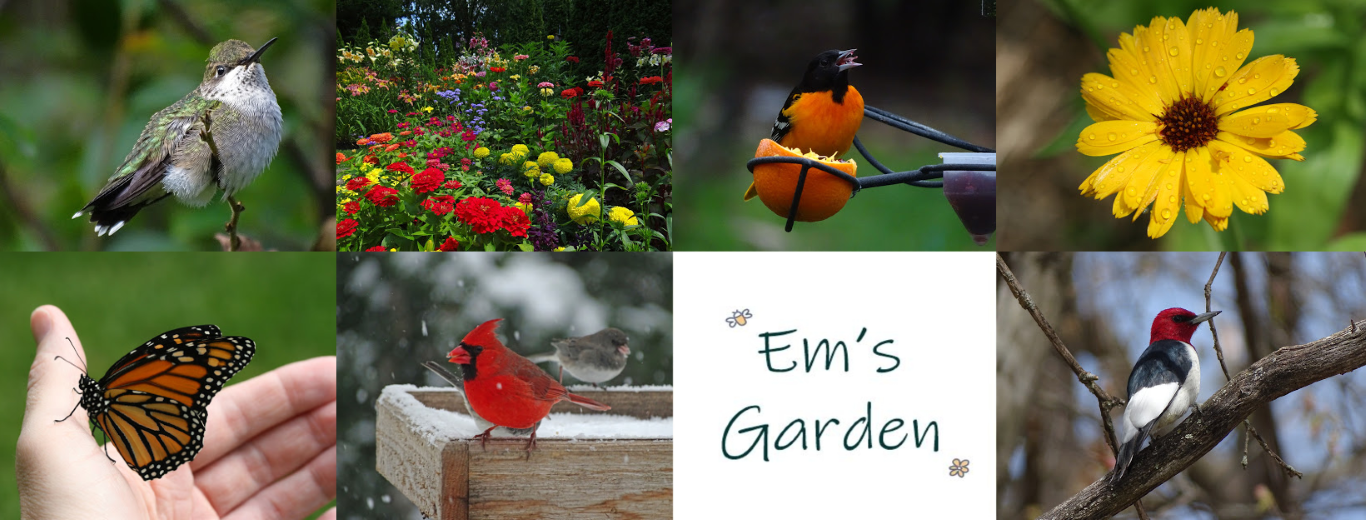Today’s Bird ID quiz features two small songbird species.
If this was all you saw in your binoculars before they flew away, could you identify these 2 birds by their backsides?
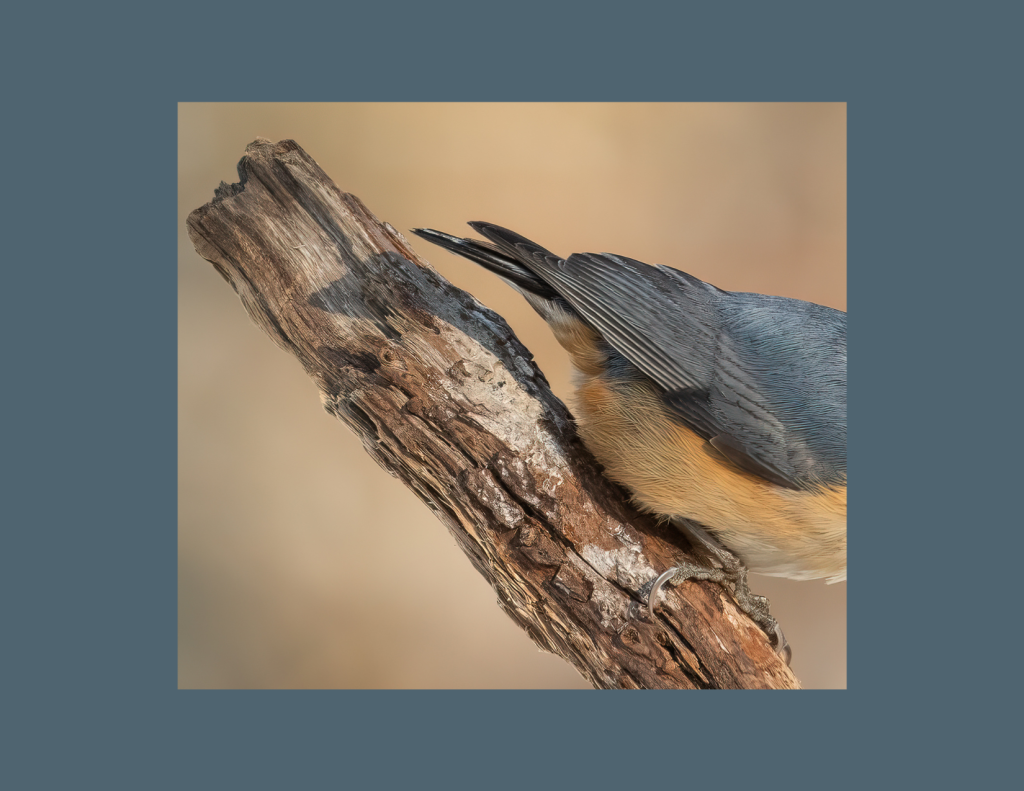
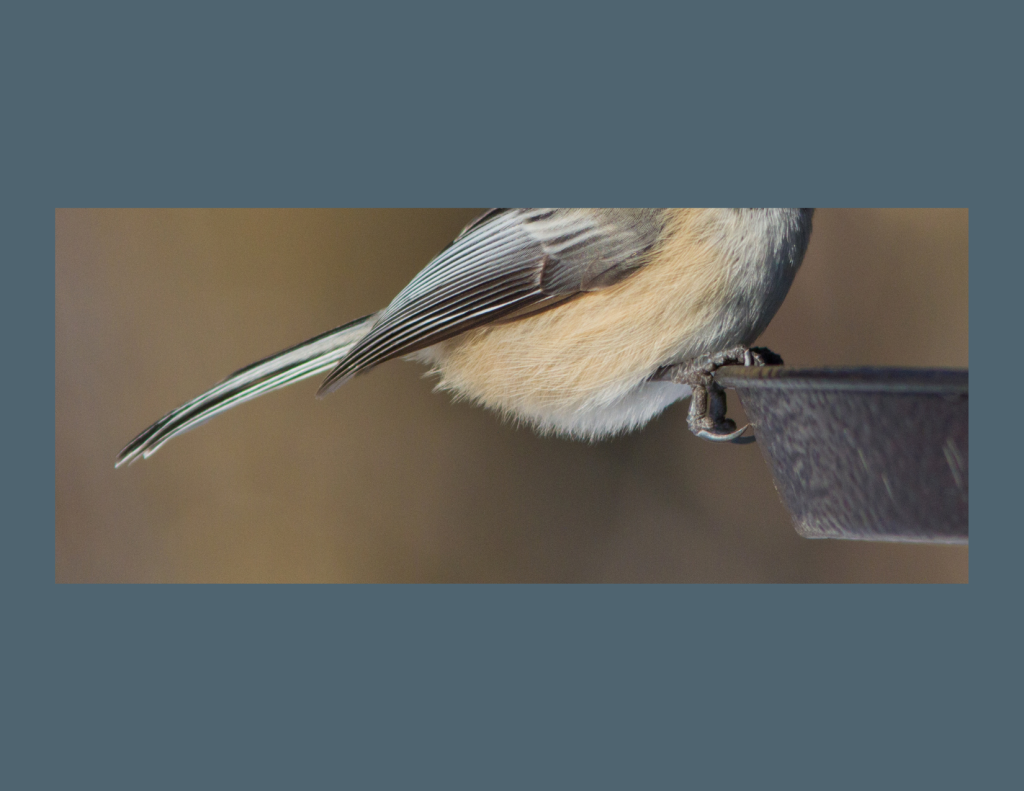
Here are some hints:
One species has rusty-red flanks and a rusty-red belly (in the females that rust color is more pale).
The other has buffy-colored flanks and a white belly.
Both species are acrobatic and don’t sit still for very long.
One is 4.5- to 6 inches long and the other is a little more than 4″ long from beak to tail.
If you guessed Red-breasted Nuthatch for the first bird, you got it right!
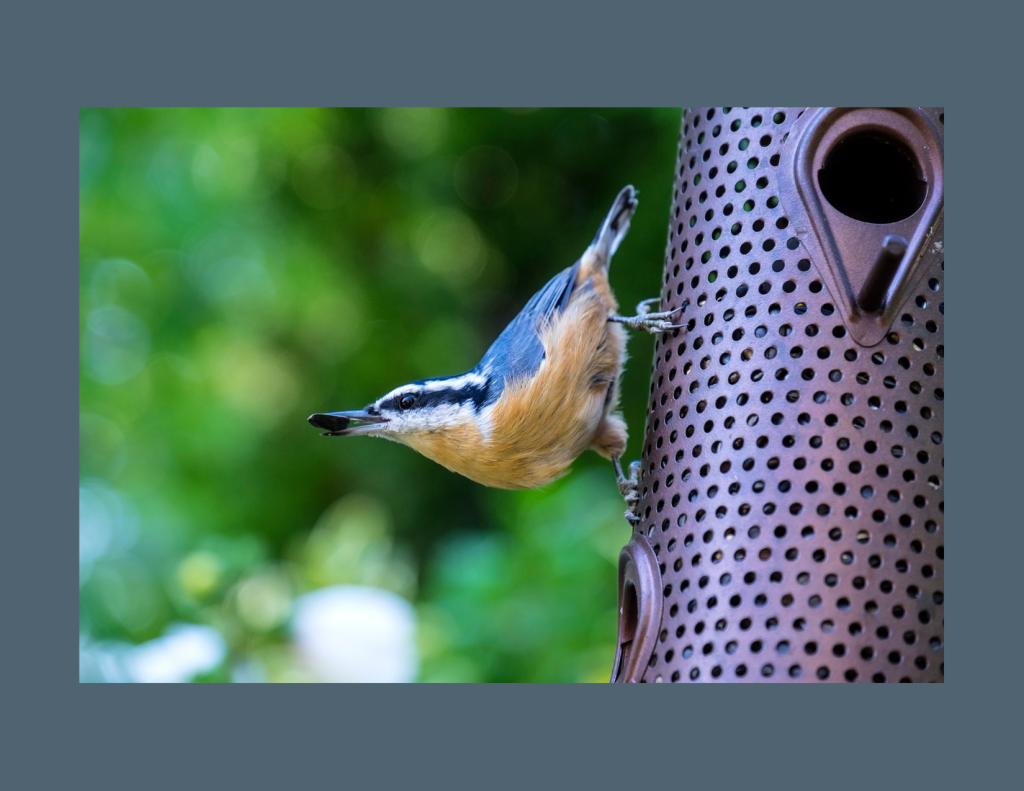
You can see that the rust-red color runs from their throat all the way to the tail.
Bird #2 is the Black-capped Chickadee!
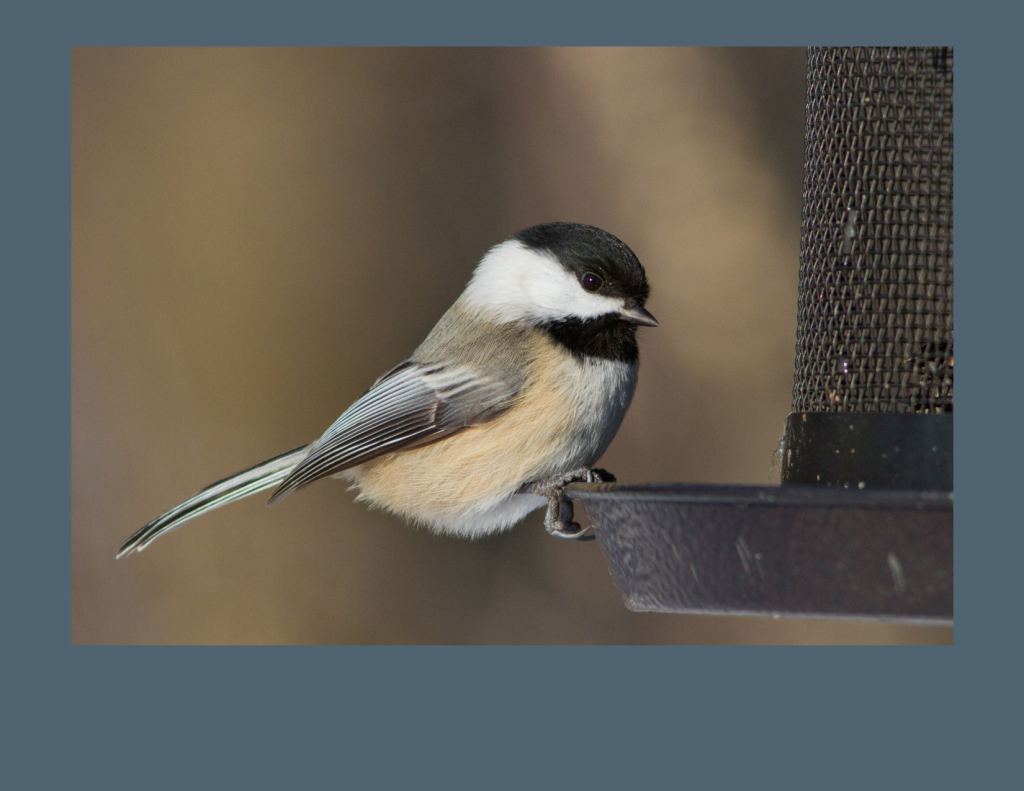
Red-breasted Nuthatches are found in 49 U.S. states and Canada. They are irruptive meaning that from year to year they move to where they can find the best food sources.
Conifer seeds are their favorites in fall and winter. If pests, drought or fires disturb the trees in the boreal forests of Canada, they’ll move further south for the winter. The trees must be doing okay because I haven’t seen a Red-breasted Nuthatch in my yard for 3 years now!
Black-capped Chickadees can be found in all of the northern United States from coast to coast year-round. Their range also dips into Missouri, Kansas, Utah and Colorado.
Both birds are described as having little to no neck.
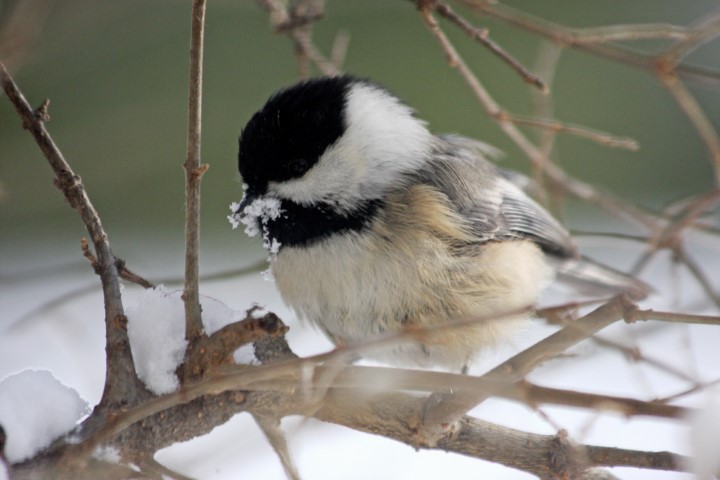
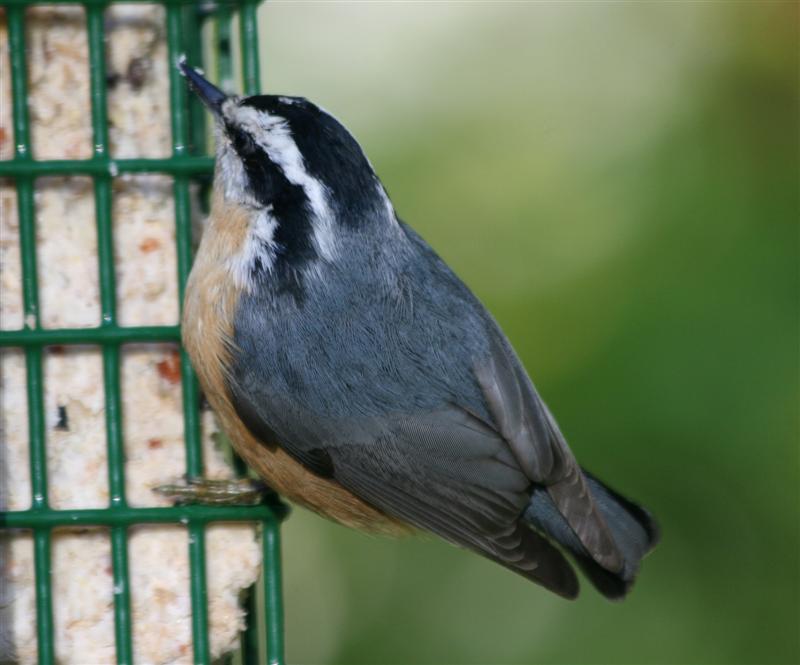
Once you see the whole bird they are quite easy to tell apart, but because they are so active you may not always get a good look in your binoculars.
One helpful identifier is that chickadees have long tails while Red-Breasted Nuthatches have stubby tails. And chickadees are black and white (with those buffy flanks) while the nuthatches are bluish gray with those cinnamon undersides.
The Red-breasted Nuthatch has a longer beak that it uses to extract seeds from pine cones.
While you can find both species in the woods, both are also very comfortable coming to bird feeders. You can attract them with sunflower seeds, shelled peanuts and suet.
